Changing a torchon lace pattern
Both of these samples were worked using the same pattern. The difference is in the selection of stitches worked. This is where 'reading' the pattern comes in. Look at each element and deciding which stitch is to be worked.
We look at the same elements and decide which stitch to use. Below the sample pictures are a list of the stitches used for each element - see how the stitch choice affects to look of the element and changes to overall look and feel of the lace.
The basic interpretation of the pattern
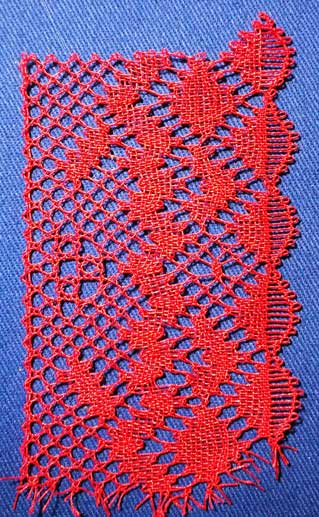 |
A selection of different stitches (a sampler)
 |
Stitches used |
Stitches used |

|
Footside
Winkie pin footside with a cloth stitch passive pair
The winkie pin footside in this instance has a passive pair in Cloth Stitch (CTC) added to give strength to the edge.
A winkie pin footside is distinguished by the outgoing pair goes out of the ground, 2-3 twists are added to go around the pin before going back into the work as a ground pair.
The extra twists are so that when the pin is removed, the pair of threads do not separate into 2 loops. |
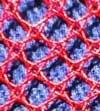
|
Ground
Torchon Ground
(CTpCT)
Probably the first ground stitch taught, this is the lightest ground and gives a lovely contrast to Cloth Stitch elements (such as in this piece) |
 |
Ground
Roseground
This cluster of 3 Roseground have been added to give interest to the otherwise plain torchon ground.
There are over 25 variations of Roseground, many of which are beautiful. |
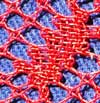 |
Lozenge
Cloth Stitch (CTC) |
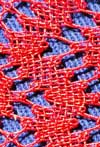 |
Trail
Cloth Stitch (CTC) |
 |
Diamond
Cloth Stitch (CTC) |
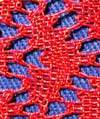 |
Chevron
Cloth Stitch (CTC) |
 |
Spider
Cloth Stitch (CTC) |
 |
Fan
Cloth Stitch with Gap |
| |
|
| |
|
|
 |
Footside
Straight Torchon Footside
The straight torchon footside is recognised for the straight outer edge of the footside. It is worked using 2 pairs as the outside edge and having a pivet pin.
Pivot pin - Where the pin is placed to the side of the crossing/joining pairs, rather than between them (the pairs pivot around the pin)
In this example the footside pairs are returned to the outside edge at the first ground pin by working a Double Torchon Ground. |
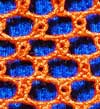 |
Ground
Double Torchon Ground
(CTCTpCTCT)
Also called Whole Stitch Ground.
This ground is used to add strength to the overall lace or to add a visual difference to the lace. |
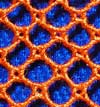 |
Ground
Twisted Torchon Ground
(CTpCTT)
There are several variations of Twisted Torchon Ground all based on adding extra twists to the Torchon Ground (CTpCT)
- CTTpCT
- CTpCTT
- CTTpCTT
|
 |
Lozenge
Cloth Stitch (CTC) |
 |
Trail
Cloth Stitch (CTC) |
 |
Trail
Half Stitch (CT) |
 |
Diamond
Half Stitch (CT) |
 |
Diamond
Half Stitch/Cloth Stitch |
 |
Chevron
Cloth Stitch/Half Stitch |
 |
Spider
Cloth Stitch or Simple Spider |
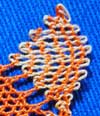 |
Fan
Whole Stitch
(CTCT)
This stitch is also called Cloth Stitch and Twist |
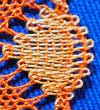 |
Fan
Cloth Stitch |
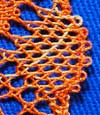 |
Fan
Half Stitch |
 |
Fan
Cloth Stitch with a gap |
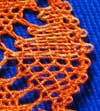 |
Fan
Cloth Stitch/Half Stitch |
|
Because lace has been worked in many different regions and countries, many of the stitches used will have different names. This can be very confusing to the beginner lacemaker (and some of us older ones too LOL).
I use the following terms
Half stitch is worked Cross, Twist (CT)
Cloth stitch is worked Cross, Twist, Cross (CTC)
Whole stitch is worked Cross, Twist, Cross, Twist (CTCT)
Anatomy | Reading | Changing | Different ways of drawing a torchon lace pattern
Reading colour coded torchon lace patterns
|

